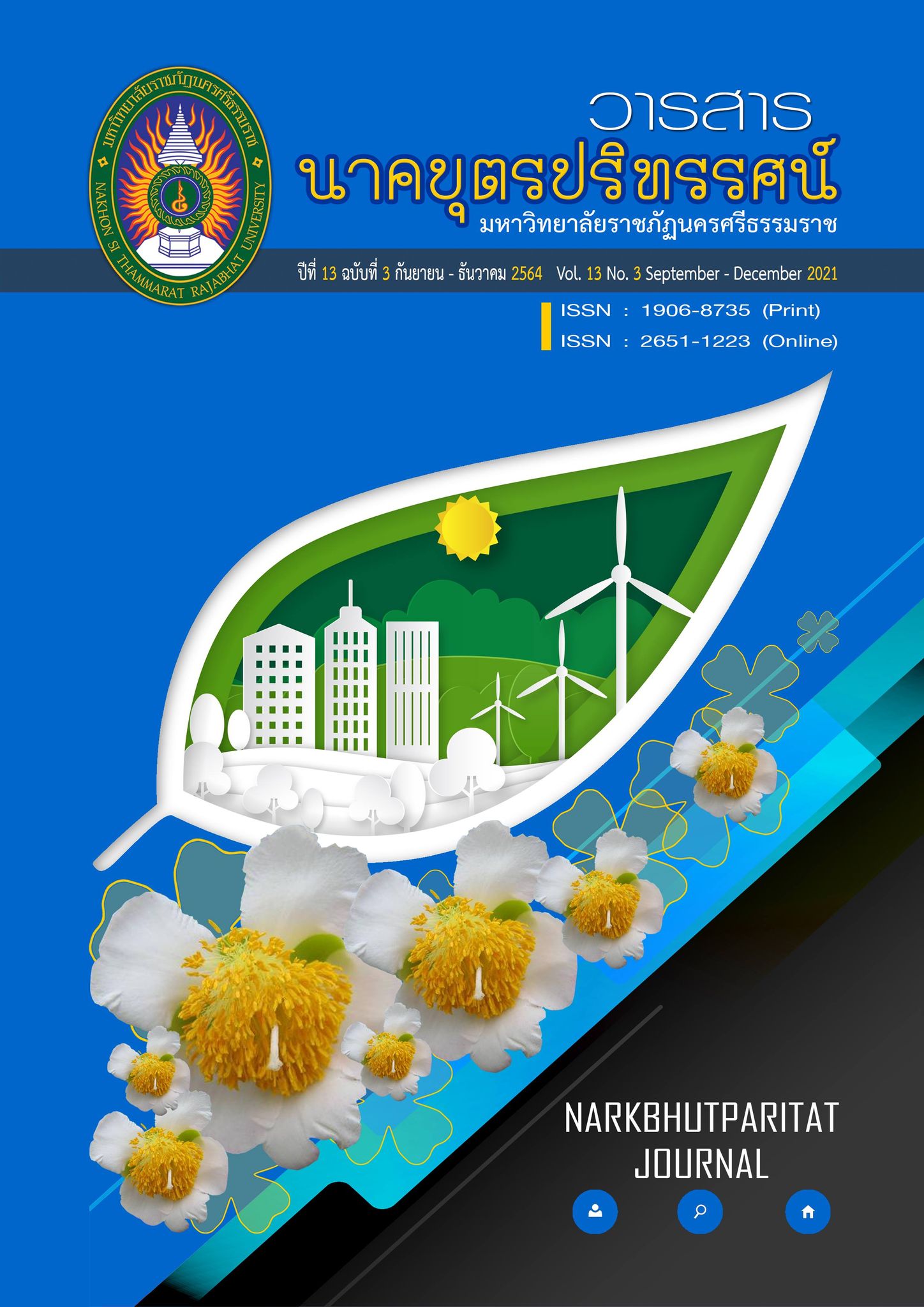A Development of the Four-Tier Diagnostic Test to Study Misconceptions in Global Change, Astronomy and Space for Grade Nine Students
Main Article Content
Abstract
This research aims to create and validate the quality of the four-tier diagnostic test to study the conceptions of learning about global change, astronomy and space for grade nine students. The sample consisted of four hundred and eighty grade nine students in schools under the Office of Secondary Education Service Area 4 (Pathum Thani province) from Multi-Stages Random. The development approach is (1) surveying inaccurate concepts with a subjective test in order to allow students to answer the answer and the reasoning of the answer, (2) to create a diagnostic test. It is a multi-choice test with four options, namely an answer step, a reasoning step, which confidence is required in each step, and (3) validate the quality of the four-tier diagnostic test in terms of difficulty, discriminant index and the reliability of Kuder-Richardson (KR-20).
The results of research were as follows: (1) the results of the creation of the four-tier diagnostic test to study the misconceptions of learning about global change, astronomy and space consist of 3 tests. They are 1. Weather phenomena and atmosphere, 9 concepts, 17 questions, 2. Soil, rocks, minerals and water, 14 concepts, 25 questions 3. The structure of the world, astronomy and space, 6 concepts, total 12 items, total 54 items. (2) The results of the quality examination had an Index of Item Objective Congruence (IOC) between 0.60-1.00. The difficulty, the discrimination index and the reliability in the answer step and the reasoning step of the answer of test the first edition was between 0.18-0.73, 0.21-0.62 and 0.07-0.74, 0.00-0.78 and 0.67, 0.63 respectively. The second one was between 0.22-0.84, 0.20-0.72 and 0.22-0.63, 0.22-0.72 and 0.65, 0.65 respectively. The last one was between 0.23-0.88, 0.26-0.66 and 0.26-0.78, 0.22-0.78 and 0.63, 0.60 respectively.
Article Details
References
Caleon, Imelda S, Subramaniam R. (2009). Do Students Know What They Know and What They Don’t Know? Using a Four–Tier Diagnostic Test to Assess the Nature of Students’ Alternative Conceptions. Res Sci Educ, 40, 313–337.
Habiddin, Mary P E. (2019). Development and Validation of a Four-Tier Diagnostic Instrument for Chemical Kinetics (FTDICK). Indonesian Journal of Chemistry. 2019(19). 720-736
Ridho A. N, Karina V. (2019). Development of A Four-Tier Diagnostic Test For Misconception of Oscillation and Waves. Journal Penelitian dan Pengembangan Pendidikan Fisika. 2019(5). 69-76
Yuberti, Suryani Y, Kurniawati I. (2020). Four-tier diagnostic test with certainty of response index to identify misconception in physics. Indonesian journal of science and mathematics education. 2020. 246-253
Homrit S. (2016). Development of four-tier diagnostic test to study student’ misconception and lack of knowledge about force and laws of motion for 10th grade students in sing buri province. (Master of Education Thesis). Srinakharinwirot University, Faculty of Science Education. (in Thai)
Karakate T. (2018). Construction of a four-tier diagnostic test to study misconceptions in biology regarding the topic of cell division for grade ten students. (Master of Education Thesis). Srinakharinwirot University, Faculty of Education, Research & Development on Human Potentials. (in Thai)
Laohaphaiboon P. (1999). Science teaching approach. (Revised Edition). Bangkok: Thai Wattana Panich. (in Thai)
Maneesai S. (2012). Develop a diagnostic test for deficiencies in scientific analysis of the reproduction of living things For students in grade 5. (Master of Education Thesis). Rajabhat Maha Sarakham University. Faculty of Graduate Studies. (in Thai)
National Institute of Education Testing Service. (2012). Guide to Ordinary National Educational Test (O-NET) for Grade six and Grade nine , Academic Year 2012. (in Thai)
Paisanit P. (2014). Research and development of research stratigies to improve scientific literacy for matthayomsuksa students: a mixed method approach. An online journal of Education. 2014(9). 739-752. (in Thai)
Puangjan Y. (2014). Create a test for diagnosing defects in studying physics on sound for grade 5 students. (Master of Education Thesis). Rajabhat Maha Sarakham University. Faculty of Graduate Studies. (in Thai)
Saiyot L & Saiyot A. (1996). Learning Outcome Measurement Techniques. Bangkok: Academic Promotion Center Press. (in Thai)
The Office of Secondary Education Service Area of Pathum Thani province. (2018). Results of Ordinary National Educational Test (O-NET) Academic Year 2018. (in Thai)


